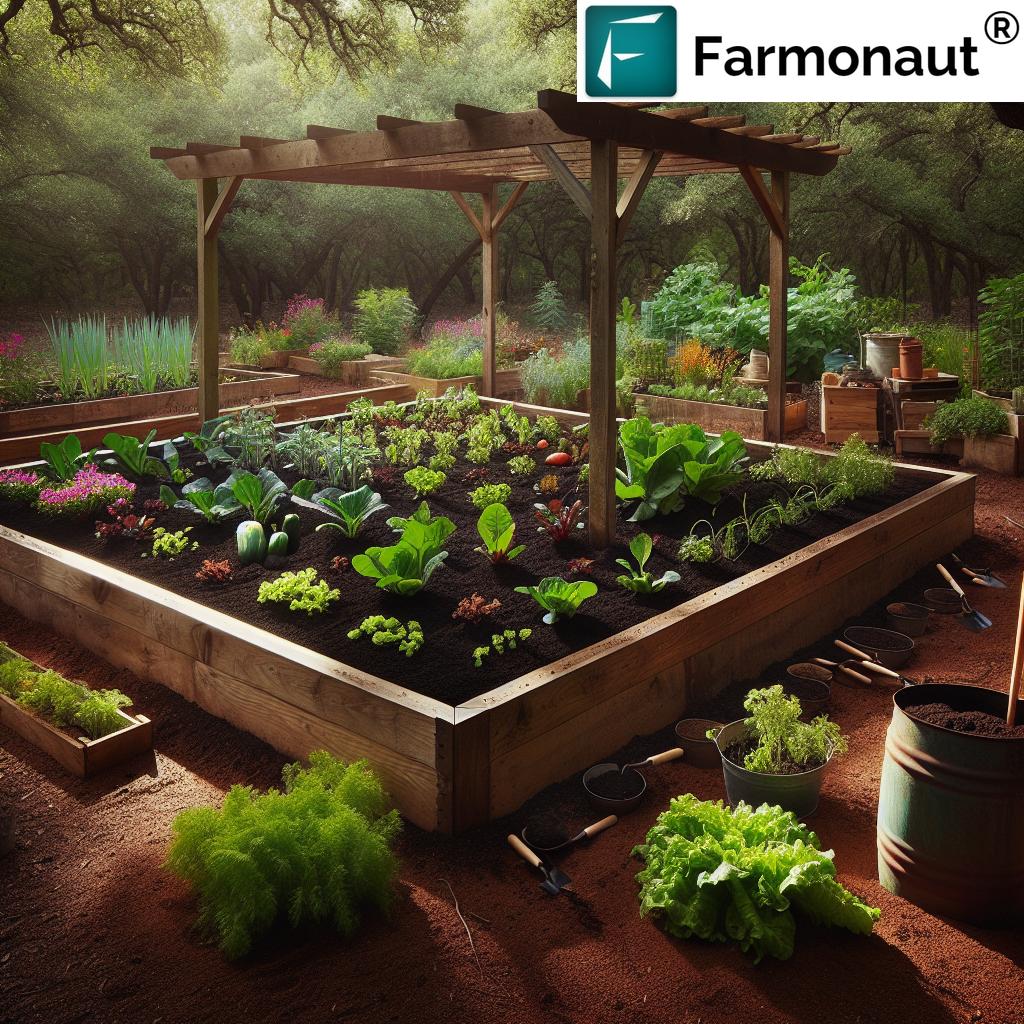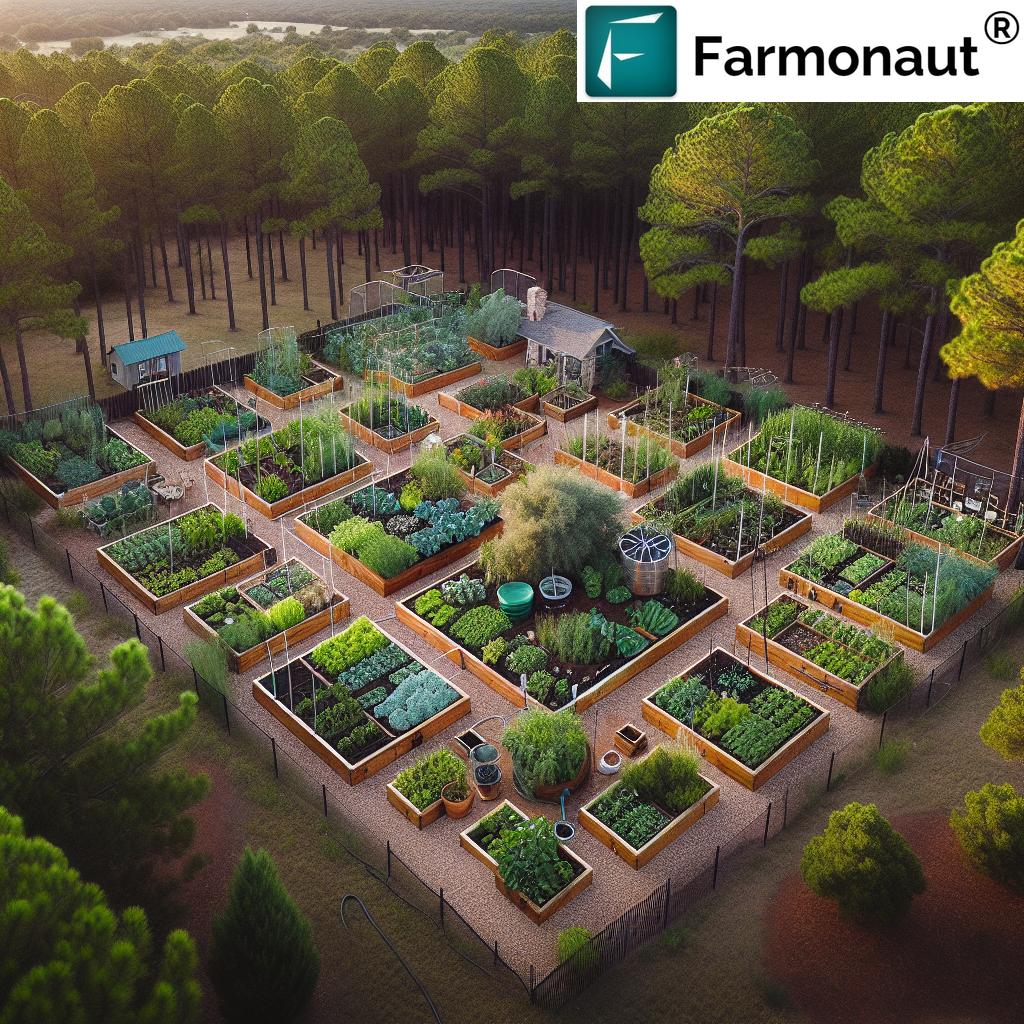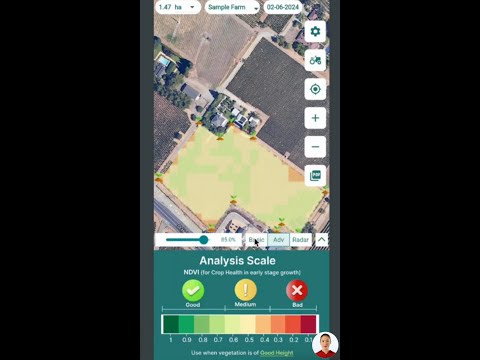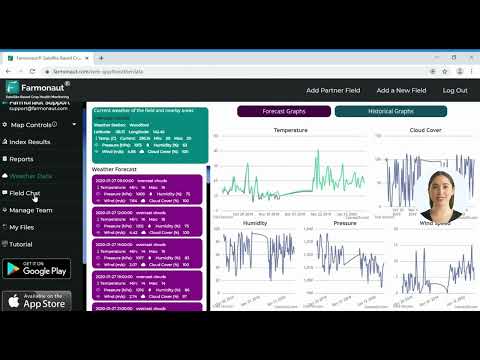Mastering East Texas Gardening: Ultimate Guide to Raised Bed Success in Angelina County
“Raised garden beds can increase soil temperature by up to 8-13°F, extending the growing season in East Texas.”
Welcome to our comprehensive guide on mastering East Texas gardening with a focus on raised bed success in Angelina County. As experienced gardeners and agricultural enthusiasts, we’re excited to share our knowledge and help you transform your garden into a thriving oasis. Whether you’re a novice or a seasoned green thumb, this guide will provide you with valuable insights and practical tips to overcome the unique challenges of gardening in our region.
Why Raised Beds are Ideal for East Texas Gardening
East Texas, particularly Angelina County, presents some specific challenges for gardeners. Our region is known for its clay-heavy soils, which can lead to poor drainage and compaction issues. Additionally, many urban and suburban areas have seen topsoil removal and terrain changes due to construction. Raised garden beds offer an excellent solution to these problems, providing numerous benefits for plant growth and garden management.
- Improved soil quality and drainage
- Better control over soil composition
- Enhanced root growth and plant health
- Easier maintenance and accessibility
- Extended growing season
Let’s dive deeper into how raised beds can revolutionize your East Texas gardening experience.
Understanding East Texas Soil Conditions
Before we delve into the specifics of raised bed gardening, it’s crucial to understand the soil conditions we’re working with in East Texas, particularly in Angelina County.
Clay Subsoil and Drainage Issues
Much of Angelina County has a clay subsoil that can lead to water collection and poor drainage. This can be detrimental to many plants, as excessive moisture around the roots can lead to root rot and other issues. Raised beds allow us to create a layer of well-draining soil above this problematic clay layer, giving plants a better chance to thrive.
Soil Acidity
East Texas soils are often acidic, which can limit the types of plants that grow well naturally. With raised beds, we have the opportunity to adjust the soil pH more easily, broadening the range of plants we can successfully cultivate.
Compaction and Aeration
Soil compaction is another common issue in our region, particularly in areas where heavy machinery or foot traffic has compressed the soil over time. Compacted soil restricts root growth and reduces oxygen availability to plant roots. Raised beds provide a solution by offering loose, well-aerated soil that’s perfect for root development.

Benefits of Raised Bed Gardening in East Texas
Now that we understand the soil challenges in our region, let’s explore the specific benefits that raised bed gardening offers to East Texas gardeners.
1. Improved Soil Quality
With raised beds, we have complete control over the soil composition. We can create a perfect blend of topsoil, compost, and organic matter that’s ideal for plant growth. This allows us to bypass the natural soil issues and provide our plants with the best possible growing medium.
2. Enhanced Drainage
“Properly constructed raised beds can improve drainage by 30-50%, crucial for Angelina County’s clay-heavy soils.”
By elevating the planting area, raised beds naturally improve drainage. Water can move more freely through the soil, reducing the risk of waterlogging and root rot. This is particularly beneficial in our clay-rich soils that tend to retain water.
3. Extended Growing Season
Raised beds warm up faster in the spring and retain heat better than in-ground gardens. This can extend our growing season by several weeks on both ends, allowing us to start planting earlier and harvest later into the fall.
4. Weed and Pest Control
Raised beds make it easier to manage weeds and pests. The elevated structure creates a barrier against many ground-dwelling pests, and the controlled environment makes it simpler to spot and remove weeds before they become a problem.
5. Accessibility and Comfort
For many gardeners, especially those with mobility issues, raised beds offer a more comfortable gardening experience. The elevated height reduces the need for bending and kneeling, making planting, maintenance, and harvesting much easier on the body.
Constructing Your Raised Garden Bed
Now that we’ve covered the benefits, let’s get into the practical aspects of building your raised garden bed. We’ll guide you through the process step by step, ensuring you have all the information you need to create the perfect raised bed for your East Texas garden.
Choosing the Right Location
Before you start building, it’s crucial to select the right location for your raised bed. Consider the following factors:
- Sunlight: Most vegetables need at least 6-8 hours of direct sunlight daily.
- Proximity to water source: Ensure easy access for watering.
- Drainage: Avoid low-lying areas where water might collect.
- Accessibility: Place beds where you can easily reach all sides.
Selecting Materials for Your Raised Bed
The choice of materials for your raised bed is crucial, as it affects both the longevity of your structure and the health of your plants. Here’s a comparison of common materials:
| Material Type | Estimated Lifespan (years) | Cost Range | Soil Retention Rating (1-5) | Pest Resistance | Ease of Installation (1-5) | Heat Retention Properties | Aesthetic Appeal (1-5) |
|---|---|---|---|---|---|---|---|
| Cedar | 15-20 | High | 4 | High | 4 | Medium | 5 |
| Pine | 5-10 | Low | 3 | Low | 5 | Low | 3 |
| Composite | 20+ | High | 5 | High | 3 | High | 4 |
| Concrete Blocks | 25+ | Medium | 5 | High | 2 | High | 2 |
For East Texas conditions, we recommend cedar or composite materials due to their durability and resistance to our humid climate. However, budget-conscious gardeners can still achieve great results with treated pine, which is more affordable but may need replacement sooner.
Step-by-Step Construction Guide
- Prepare the site: Clear the area of grass and vegetation. Level the ground as much as possible.
- Lay a weed barrier: Place cardboard or landscape fabric over the cleared area to prevent weeds from growing up into your bed.
- Build the frame: Construct your raised bed frame using your chosen material. A common size is 4 feet wide by 8 feet long, which allows easy reach from all sides.
- Install the frame: Place the frame in your chosen location. If using wood, consider adding corner brackets for extra stability.
- Fill with soil: Add your soil mix, which we’ll discuss in detail in the next section.
- Add irrigation: Consider installing a drip irrigation system for efficient watering.
Remember, the height of your raised bed can vary based on your needs. A height of 10-12 inches is sufficient for most plants, but you may want to go higher for better accessibility or to accommodate deep-rooted plants.
Soil Improvement Techniques for East Texas Raised Beds
Creating the perfect soil mix is crucial for the success of your raised bed garden. In East Texas, we need to focus on creating a well-draining, nutrient-rich soil that can support a wide variety of plants.
The Ideal Soil Mix
A good starting point for your raised bed soil mix is:
- 60% topsoil
- 30% compost
- 10% perlite or vermiculite
This mix provides a balance of nutrients, water retention, and drainage. The compost adds organic matter and nutrients, while the perlite or vermiculite improves aeration and drainage.
Adjusting Soil pH
East Texas soils tend to be acidic, which can be problematic for many garden plants. To adjust the pH of your raised bed soil:
- Test your soil pH using a home testing kit or through your local extension office.
- To raise pH (make soil less acidic), add lime. For our area, dolomitic lime is often recommended as it also adds magnesium to the soil.
- To lower pH (make soil more acidic), add sulfur or peat moss.
Aim for a pH between 6.0 and 7.0 for most vegetables and flowers.
Organic Matter: The Key to Healthy Soil
Incorporating organic matter is crucial for maintaining healthy soil in your raised beds. It improves soil structure, enhances water retention, and provides nutrients for plants. Some great sources of organic matter include:
- Compost
- Well-rotted manure
- Leaf mold
- Cover crops (green manures)
Add a layer of compost or other organic matter to your beds each year to maintain soil health and fertility.
Plant Selection for East Texas Raised Beds
Choosing the right plants for your raised beds is essential for a successful garden. Here are some vegetables and herbs that thrive in East Texas raised beds:
Spring and Summer Crops
- Tomatoes
- Peppers
- Squash
- Okra
- Eggplant
- Beans
- Cucumbers
Fall and Winter Crops
- Lettuce
- Spinach
- Kale
- Broccoli
- Cauliflower
- Carrots
- Radishes
Herbs
- Basil
- Rosemary
- Thyme
- Oregano
- Cilantro
- Parsley
Remember to consider companion planting when arranging your plants. Some plants grow better together, while others may inhibit each other’s growth.

Watering and Irrigation for Raised Beds
Proper watering is crucial for the success of your raised bed garden. Due to their elevated nature, raised beds can dry out faster than in-ground gardens, especially during the hot East Texas summers.
Watering Techniques
- Deep, infrequent watering: Water deeply but less frequently to encourage deep root growth.
- Water at the base: Direct water to the base of plants to avoid wetting foliage, which can lead to disease.
- Morning watering: Water early in the day to reduce evaporation and allow leaves to dry before nightfall.
Irrigation Systems
Consider installing an irrigation system for efficient and consistent watering. Options include:
- Drip irrigation: Delivers water directly to plant roots, reducing water waste and minimizing leaf wetness.
- Soaker hoses: A budget-friendly option that provides slow, deep watering.
- Micro-sprinklers: Useful for beds with densely planted crops or seedlings.
Whichever system you choose, pair it with a timer for automated watering, ensuring your plants receive consistent moisture even when you’re away.
Pest Management in Raised Bed Gardens
While raised beds can help reduce pest problems, they’re not entirely immune. Here are some organic pest management strategies for East Texas gardens:
Preventive Measures
- Crop rotation: Change the location of plant families each year to disrupt pest lifecycles.
- Companion planting: Grow plants that repel pests alongside your crops.
- Physical barriers: Use row covers or netting to protect plants from insects and birds.
Natural Pest Control
- Beneficial insects: Encourage predatory insects like ladybugs and praying mantises.
- Neem oil: An organic pesticide effective against many common garden pests.
- Diatomaceous earth: A natural powder that deters crawling insects.
Remember, a healthy garden is more resistant to pests. Focus on building healthy soil and providing proper care to your plants to reduce pest problems naturally.
Seasonal Maintenance for East Texas Raised Beds
Maintaining your raised beds throughout the year is key to long-term success. Here’s a seasonal guide for East Texas gardeners:
Spring
- Add compost or other organic matter to beds
- Test and adjust soil pH
- Plant warm-season crops
- Set up irrigation systems
Summer
- Monitor for pests and diseases
- Mulch beds to retain moisture
- Harvest regularly
- Provide shade for heat-sensitive plants
Fall
- Plant cool-season crops
- Clean up spent summer plants
- Add a layer of compost
- Plant cover crops in empty beds
Winter
- Protect cold-sensitive plants
- Plan for next year’s garden
- Repair and maintain bed structures
- Order seeds for spring planting
By following this seasonal guide, you’ll ensure your raised beds remain productive and healthy year-round.
Maximizing Space in Raised Bed Gardens
One of the great advantages of raised bed gardening is the ability to maximize space efficiency. Here are some techniques to get the most out of your raised beds:
Vertical Gardening
Utilize vertical space by growing climbing plants like peas, pole beans, and cucumbers on trellises or supports. This not only saves space but can also create an attractive garden feature.
Intensive Planting
Plant crops closer together than you would in a traditional garden. The improved soil conditions in raised beds allow for this denser planting without compromising plant health.
Succession Planting
As soon as one crop is harvested, replace it with another. This keeps your beds productive throughout the growing season.
Intercropping
Grow complementary plants together, such as planting quick-maturing radishes between slower-growing carrots.
By implementing these space-saving techniques, you can significantly increase the yield from your raised bed garden.
Overcoming Shade Issues in Urban Settings
Many urban and suburban gardens in East Texas face challenges with shade, often due to buildings or mature trees. Here are strategies to maximize gardening success in shaded areas:
Choose Shade-Tolerant Plants
Many vegetables and herbs can thrive in partial shade, including:
- Leafy greens (lettuce, spinach, kale)
- Root vegetables (carrots, beets, radishes)
- Herbs (parsley, cilantro, mint)
- Some fruiting plants (cherry tomatoes, bush beans)
Maximize Available Light
- Use reflective surfaces (like white-painted walls) to bounce light onto plants
- Prune overhanging branches to allow more sunlight
- Position raised beds to catch morning sun if possible
Adapt Your Gardening Practices
- Extend the growing season by starting plants indoors
- Use season extenders like cold frames or row covers
- Focus on microgreens or sprouts that don’t require full sun
With these strategies, even gardeners in shaded urban areas can enjoy successful raised bed gardens.
Incorporating Technology in Raised Bed Gardening
Modern technology can greatly enhance your raised bed gardening experience. Here are some ways to incorporate tech into your garden:
Soil Monitoring Devices
Use soil moisture sensors and pH meters to get real-time data on your soil conditions. This allows for more precise watering and fertilization.
Smart Irrigation Systems
Install smart irrigation controllers that adjust watering based on weather conditions and soil moisture levels.
Garden Planning Apps
Utilize apps for garden planning, plant tracking, and harvest recording. These can help you optimize your planting schedule and crop rotation.
Weather Stations
Install a small weather station to monitor local conditions, helping you make informed decisions about plant care and protection.
While technology can be a great aid, remember that nothing replaces the hands-on experience and observation of a dedicated gardener.
Community Resources for East Texas Gardeners
Angelina County and the broader East Texas region offer numerous resources for gardeners looking to enhance their skills and connect with fellow enthusiasts:
- Texas A&M AgriLife Extension Service: Offers educational programs, soil testing services, and expert advice.
- Local Garden Clubs: Join a garden club to share knowledge and experiences with other local gardeners.
- Community Gardens: Participate in or visit community gardens to learn new techniques and varieties that thrive in our area.
- Farmers Markets: Connect with local growers and learn about successful crops and growing methods in our region.
Don’t hesitate to reach out to these resources for support and information specific to East Texas gardening.
Conclusion: Embracing the Raised Bed Revolution in East Texas
Raised bed gardening offers a perfect solution for many of the challenges faced by East Texas gardeners. From improving soil conditions to extending the growing season, raised beds can transform your gardening experience. By implementing the techniques and tips outlined in this guide, you’ll be well on your way to creating a thriving, productive garden that’s well-suited to our unique climate and soil conditions.
Remember, gardening is a journey of continuous learning and adaptation. Don’t be afraid to experiment, learn from both successes and failures, and most importantly, enjoy the process of growing your own food and beautiful plants right here in Angelina County.
Happy gardening, East Texas!
FAQ Section
Q: How deep should a raised bed be for vegetable gardening in East Texas?
A: For most vegetables, a depth of 10-12 inches is sufficient. However, for deep-rooted plants like tomatoes or carrots, consider beds that are 18-24 inches deep.
Q: What’s the best time to start a raised bed garden in Angelina County?
A: Spring and fall are ideal times to start a raised bed garden in East Texas. Spring planting can begin after the last frost, typically in late March or early April. Fall gardens can be started in late August or September.
Q: How often should I water my raised bed garden in East Texas?
A: Watering frequency depends on various factors including weather, soil type, and plant needs. Generally, during hot summer months, raised beds may need watering every 1-2 days. Always check soil moisture before watering.
Q: Can I use native East Texas soil in my raised beds?
A: While you can use native soil, it’s often best to create a custom soil mix for raised beds. This allows you to optimize drainage and nutrient content. If using native soil, amend it with compost and other organic matter to improve its structure and fertility.
Q: How do I protect my raised bed garden from extreme weather in East Texas?
A: Use row covers or hoop houses to protect plants from unexpected frosts or extreme heat. Mulching can help regulate soil temperature and moisture. For heavy rain, ensure your beds have good drainage to prevent waterlogging.
For more information on precision agriculture and satellite-based crop monitoring, visit Farmonaut. You can also check out our API for advanced agricultural data analysis.
Download our mobile apps for on-the-go garden monitoring:
Earn With Farmonaut: Affiliate Program
Earn 20% recurring commission with Farmonaut’s affiliate program by sharing your promo code and helping farmers save 10%. Onboard 10 Elite farmers monthly to earn a minimum of $148,000 annually—start now and grow your income!







